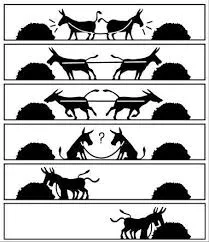
We’re publishing a day early this week, as we have a public holiday for Easter on Friday, which means a reduced number of stories this week. However, we have three good stories that made the front page. Two of them are significant enough to be in both of our newsletters, Samsung’s OLED shift and V-Nova’s codec.
The story on Samsung’s plan to switch its OLED technology is a very interesting one. First, since we published the Display Daily that outlined some of the rumours, we’ve heard from credible sources that the rumours are correct and that Samsung is planning to switch to a filter-based OLED approach. Samsung itself, as far as I can see, has not said so, but I’m comfortable with my source. That ties in with another story in this week’s issue and one from last week’s.
First, there are more reported stories that Samsung Display will split again between OLED and LCD groups (Rumour: Samsung to Spin-Off LCD, OLED Units). That was the original structure, the OLED division having been started by Samsung SDI (which was a separately listed company). The two groups were then combined and Samsung Display started operations in July 2012. Now, it looks as though the technologies will be split again. That’s intriguing.
Back a few years, Bruce Berkoff, then of LG Philips LCD used to say of OLED “I don’t care what kind of display you put on my transistor arrays”. His comment highlighted that the really difficult technology at that time was the TFT array and that remains the case for the leading edge of technology. While the amorphous silicon TFT arrays used in most LCDs are well understood and managed technology, large area polysilicon and oxide-based arrays remain challenging, for different reasons.
In large area OLED, LG uses oxide transistors, while Samsung has been trying to develop large area polysilicon substrates, a massive technical challenge because of the difficulty of getting consistent performance over large areas. Polysilicon TFTs (LTPS) are widely used and important in the displays used for mobile devices, but going above 15″ has always been difficult and I can only think of a Toshiba Matsushita panel at around 26″ that was a merchant panel made using LTPS some years ago. It was briefly sold for high end TV applications.
Now, I hear from industry sources that Samsung is abandoning the LTPS approach for large OLEDs and will adopt oxide-based transistors. Like all the other LCD makers, it has been developing oxide technology anyway, but has not, as far as I know, used it in volume production of large displays.
So, the news on a switch to filter-based and oxide-based technology might also be behind the story in our Company News section that LG and Samsung have agreed to stop fighting over patents. (Samsung, LG Agree to End Legal Disputes)
Back in 2003, I was invited to Japan by Sony for a press tour, when it announced the Wega Engine scaling technology. During the week, we had a chance to ask Ando-san, then President of Sony, questions. It was clear at the time that Sony was looking for a unique display technology to replace Trinitron. I asked whether the LCD business was then too big and tough for any single company technology to succeed. In the press event, he answered a completely different question and I thought he had misunderstood, but he admitted privately to me that “It was a good question”.
It looks as though Samsung and LG have looked at the developments in China and asked themselves the same question and decided that it’s better to just compete with each other, rather than fighting and having to individually compete with the rest of the industry. Back in the day when FED makers were competing, they were all obsessed with each other. I kept saying to them that the other FED makers were not the real enemy, that was the LCD makers, and so it turned out.
As Santayana said, and I’m fond of quoting the paraphrase, “Those who do not learn from history are condemned to repeat it”. It looks as though Samsung and LG may have realised that competitive co-operation may be the best way to stay away from the chasing pack. It may also have an influence on Samsung splitting OLED from LCD, although I suspect that may be more to do with allowing the LCD technology to be eventually split off if OLED can successfully address the large area market.
Bob

